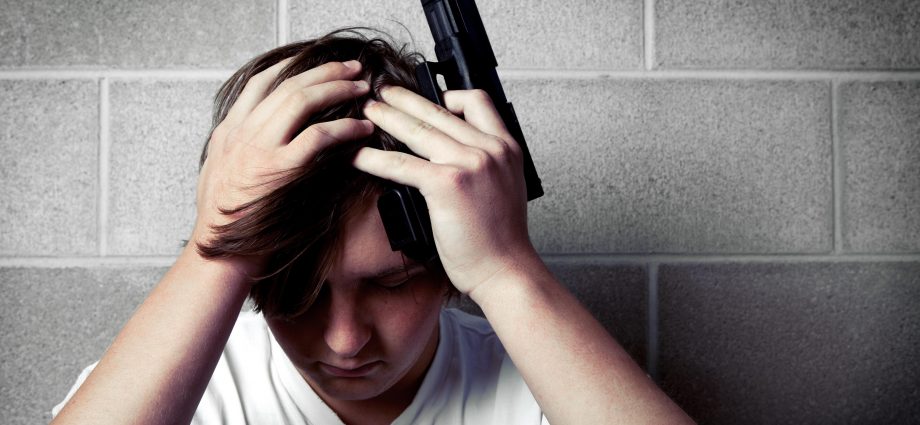TUESDAY, April 26, 2022 (HealthDay News) — If you think teen gun violence is not a pressing issue, a new study suggests otherwise.
Researchers found the percentage of U.S. teenagers carrying handguns has risen by 41% over the past two decades — with notable increases seen among white teens from higher-income families.
The researchers tracked handgun carriage among 12- to 17-year-olds between 2002 and 2019. At the outset, 3.3% said they’d carried a handgun at least once in the past year. By 2019, that had grown to 4.6%.
But the trends were not uniform: White teenagers reported the biggest increase in handgun carriage, while the rate declined among Black and Native American kids, and held fairly steady among Hispanic teens.
Meanwhile, patterns based on family income reversed: Twenty years ago, teens from the lowest-income families had the highest rate of handgun carriage. By 2019, that distinction went to kids from the wealthiest families.
Researchers said it all points to shifts in the demographics of the typical teen gun-carrier.
“What was true in the ’90s may not be true today,” said researcher Naoka Carey, a doctoral candidate at Boston College. “Let’s not make assumptions about which kids are carrying handguns.”
What the study cannot answer, she said, is why handgun carriage is rising among some teens and declining among others.
The data come from an annual U.S. federal survey that asks teenagers nationwide about various health-related topics. One question asks them to report the number of times in the past year they carried a handgun.
It does not, however, dig into context, said Alex McCourt, an assistant professor at Johns Hopkins School of Public Health who studies gun policy.
“Why are they carrying a gun?” he said. “Do they feel they need it for protection?”
As for why the overall carriage rate rose over time, McCourt pointed to one potential factor: the general “loosening” of restrictions on carrying a concealed weapon. In many states today, adults who legally possess a gun can carry it without a permit.
While that allowance does not apply to minors, McCourt said it’s possible that such policy changes and changing norms around gun carriage could affect teens’ behavior.
Regardless of the causes, he said, “this age group should not have access to handguns.”
And for parents who own guns, McCourt said the findings underscore the importance of secure storage. That means locking away firearms, unloaded and separate from ammunition.
The study, published April 26 in Pediatrics, involved over 297,000 U.S. teenagers who were surveyed between 2002 and 2019.
Among white kids, the rate of handgun carriage rose from 3.1% to 5.3% over time. In contrast, it fell from 4% to 3.2% among Black teens, and from 6.8% to 4.4% among Native Americans.
Clear differences emerged along income lines, as well — with kids from the wealthiest families showing a near-doubling in the rate of handgun carriage. Among those teens, from households making over $75,000 a year, the carriage rate rose from 2.6% to 5.1%.
The picture was different for kids from families with incomes of less than $20,000, whose gun carriage rate dipped from 4.3% to 3.7%.
Finally, there was an urban-rural divide that existed throughout the study period, but grew over time: By 2019, almost 7% of kids in rural areas said they’d carried a handgun, versus 3.8% of those in big cities.
Few teens regularly carried a gun. About 0.5% said they’d done it 10 or more times in the past year, Carey said.
“But any gun carriage among adolescents is concerning,” she stressed. “We’re worried about three things: accidents, homicide and suicide.”
Dr. Patrick Carter, an emergency physician not involved in the study, noted that those worries are well-founded: The latest federal figures show that in 2020, firearms became the leading cause of death among U.S. kids — surpassing traffic accidents, which had long topped the list.
That trend makes the increase in firearm carriage particularly troubling, said Carter, who co-directs the University of Michigan Institute for Firearm Injury Prevention.
More research is needed, he said, to understand the root causes and come up with ways to prevent those tragic deaths.
Carey noted that her study looked only at pre-pandemic trends, and that teen mental health has suffered greatly in the past two years. That, combined with gun access, is worrisome, she said.
More information
The American Academy of Pediatrics has advice for parents on gun safety.
SOURCES: Naoka Carey, JD, doctoral candidate, applied developmental and educational psychology, Lynch School of Education and Human Development, Boston College, Chestnut Hill, Mass.; Patrick Carter, MD, co-director, Institute for Firearm Injury Prevention, University of Michigan, Ann Arbor; Alex McCourt, PhD, JD, MPH, assistant professor, health policy and management, Johns Hopkins Bloomberg School of Public Health, Baltimore; Pediatrics, April 26, 2022, online
Copyright © 2025 HealthDay. All rights reserved.

